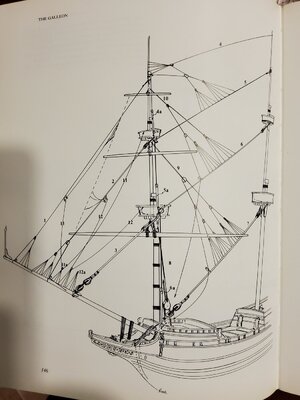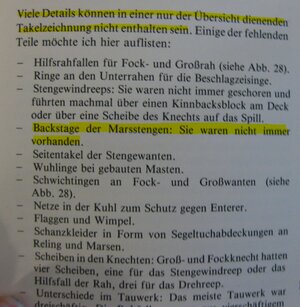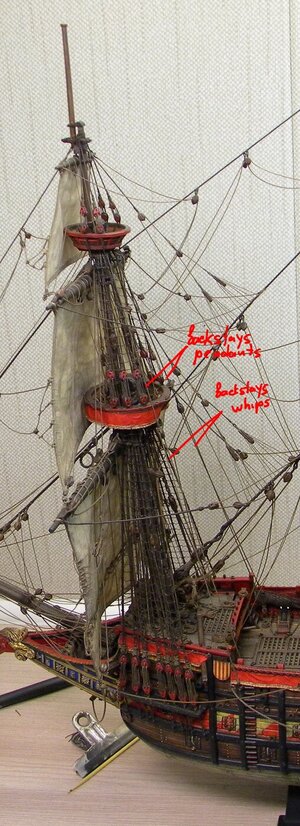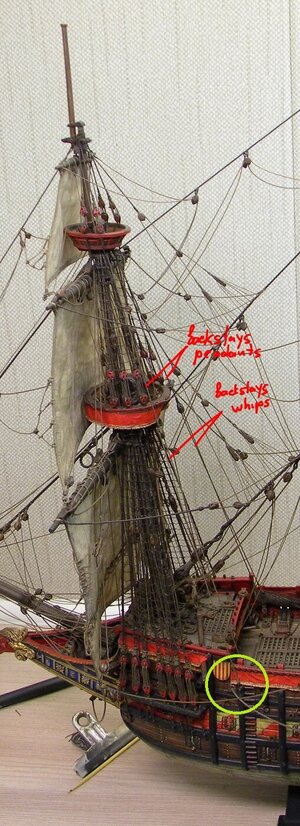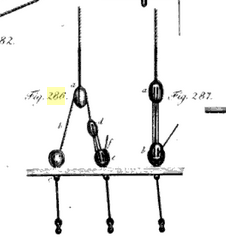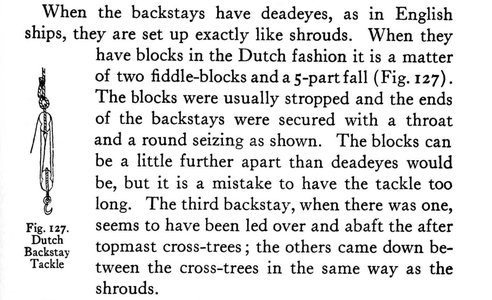Good day Stephan - You made nice input about traveling backstays,
but assume they were used mostly in 18-19 century, seems to me they will look strange on the galleon , in the Vasa days ...? In case of Constitution rigging - they will looks more at place , but Harland J. says they more typical for small vessel?
In my personal opinion, all we need to do when rigging Vasa model, just follow existing Vasa museum drawing without making mistakes... thats all... even backstays fittings on the Vasa is quite questionable ... I would say 50/50 to fitt them or not to fitt... or to fitt them as Fred Hocker suggested... but even than it will be guess work
but assume they were used mostly in 18-19 century, seems to me they will look strange on the galleon , in the Vasa days ...? In case of Constitution rigging - they will looks more at place , but Harland J. says they more typical for small vessel?
In my personal opinion, all we need to do when rigging Vasa model, just follow existing Vasa museum drawing without making mistakes... thats all... even backstays fittings on the Vasa is quite questionable ... I would say 50/50 to fitt them or not to fitt... or to fitt them as Fred Hocker suggested... but even than it will be guess work






 . I think I wrote that I was going to precisely follow Mr. Hocker's email. One or two backstays on the fore topmast and main topmast and a single backstay on the mizzen topmast. These would be configured as running backstays using tackle rather than run to deadeyes. Anderson proposes a Dutch style tackle arrangement that I could use (or maybe I don't understand what Mr. Hocker means when he says tackle???).
. I think I wrote that I was going to precisely follow Mr. Hocker's email. One or two backstays on the fore topmast and main topmast and a single backstay on the mizzen topmast. These would be configured as running backstays using tackle rather than run to deadeyes. Anderson proposes a Dutch style tackle arrangement that I could use (or maybe I don't understand what Mr. Hocker means when he says tackle???).